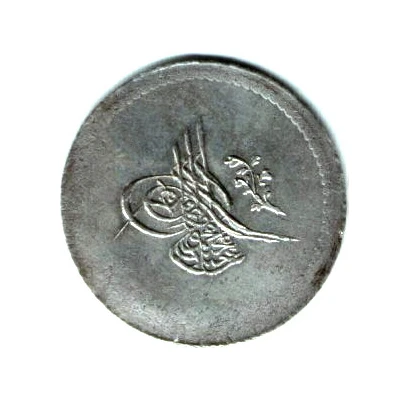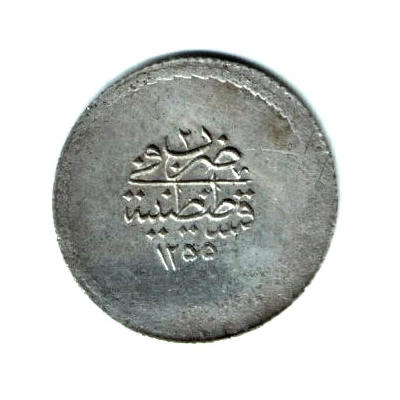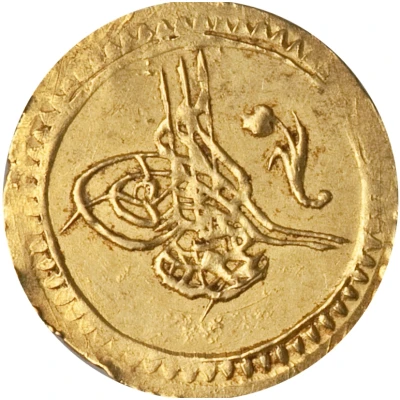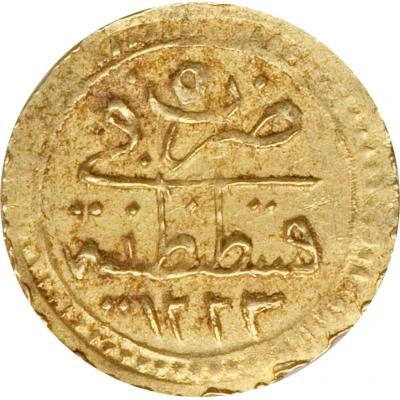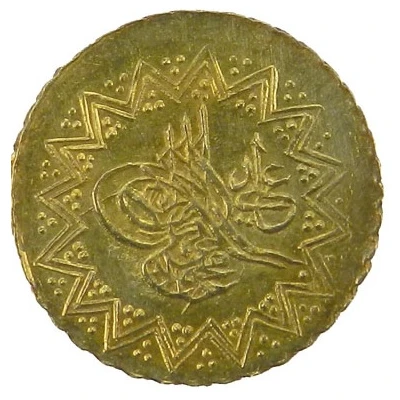
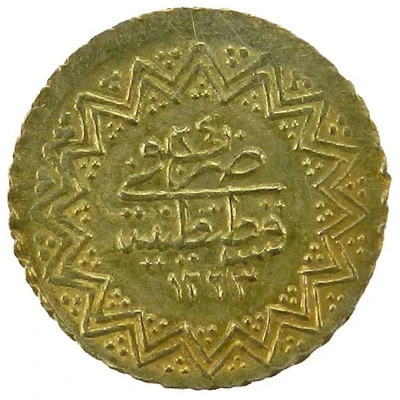

© Stephen Album Rare Coins
Yeni Rubiye - Mahmud II
1223 (1808) year| Gold | 0.3 g | 12 mm |
| Issuer | Ottoman Empire |
|---|---|
| Sultan | Mahmud II (1808-1839) |
| Type | Standard circulation coin |
| Year | 1223 (1808) |
| Calendar | Islamic (Hijri) |
| Value | ¼ New Altin (8) |
| Currency | Kuruş (1688-1844) |
| Composition | Gold |
| Weight | 0.3 g |
| Diameter | 12 mm |
| Shape | Round |
| Orientation | Medal alignment ↑↑ |
| Demonetized | Yes |
| Updated | 2024-10-06 |
| Numista | N#89741 |
|---|---|
| Rarity index | 91% |
Reverse
Value and date within center of 12-pointed star design
Script: Arabic
Lettering:
٢٤
ب
ضر
في
قسطنطينية
١٢٢٣
Translation:
Duriba fi Konstantiniyye. 1223 :
"Struck at Constantinople. [Accession in] 1223 [AH]."
Edge
Wavy
Comment
Weight varies between 0.26 and 0.31 grams.Mahmud II (20 July 1785 – 1 July 1839)
(Ottoman Turkish: محمود ثانى Mahmud-u sānī, محمود عدلى Mahmud-u Âdlî) (Turkish: II. Mahmud)
30th Sultan of the Ottoman Empire from 1808 until his death in 1839. He was born in the Topkapı Palace, Constantinople, the posthumous son of Sultan Abdul Hamid I.
His reign is recognized for the extensive administrative, military, and fiscal reforms he instituted, which culminated into the Decree of Tanzimat ("Reorganization") that was carried out by his sons Abdülmecid I and Abdülaziz I.
Often known as "Peter the Great of Turkey", Mahmud's reforms included the 1826 abolishment of the conservative Janissary corps, which removed a major obstacle to his and his successors' reforms in the Empire.
https://en.wikipedia.org/wiki/Mahmud_II
Interesting fact
One interesting fact about the Yeni Rubiye - Mahmud II 1223 (1808) coin from the Ottoman Empire is that it was issued during a time of significant economic and political change in the empire. The coin was introduced as part of a broader effort to reform the Ottoman economy and currency system, which had been facing challenges due to inflation, debasement of the currency, and a growing national debt. The Yeni Rubiye was intended to be a more stable and reliable currency, and its introduction marked a shift towards a more modern and centralized monetary system in the Ottoman Empire.
